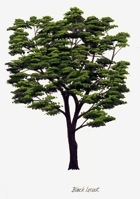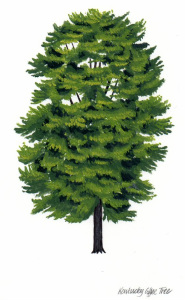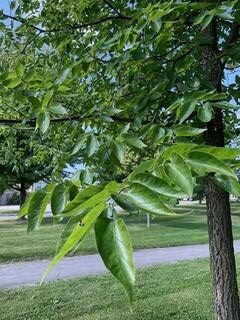Two trees on the Tree Walk, the Black Locust and the Kentucky Coffeetree, belong to a huge family of flowering plants that are part of the Fabaceae (formerly Leguminosae) family. This family includes peas, beans, and legumes.
A common feature of members of this family is the seed, encased in hard pods and similar in shape to pea pods. The Kentucky Coffeetree has seed pods that are large, round, and dark brown. It is thought that they were used as a coffee substitute, but it is now known that there are toxins in the seeds that make this a bad idea. The one found on the Tree Walk has been bred to make it seedless. The Black Locust produces a lot of seed pods and is invasive in certain environments.
Another distinctive feature of these trees is the flower. The flowers of the Black Locust are fragrant and hang in long, drooping, clusters, known as racemes. The Kentucky Coffeetree flower, while less distinctive, is interesting because the trees are either male or female, and require pollination, usually by bees, to produce fertile seeds. It has bipinnate leaves that look tropical and may be the biggest of any tree found in Ontario.




